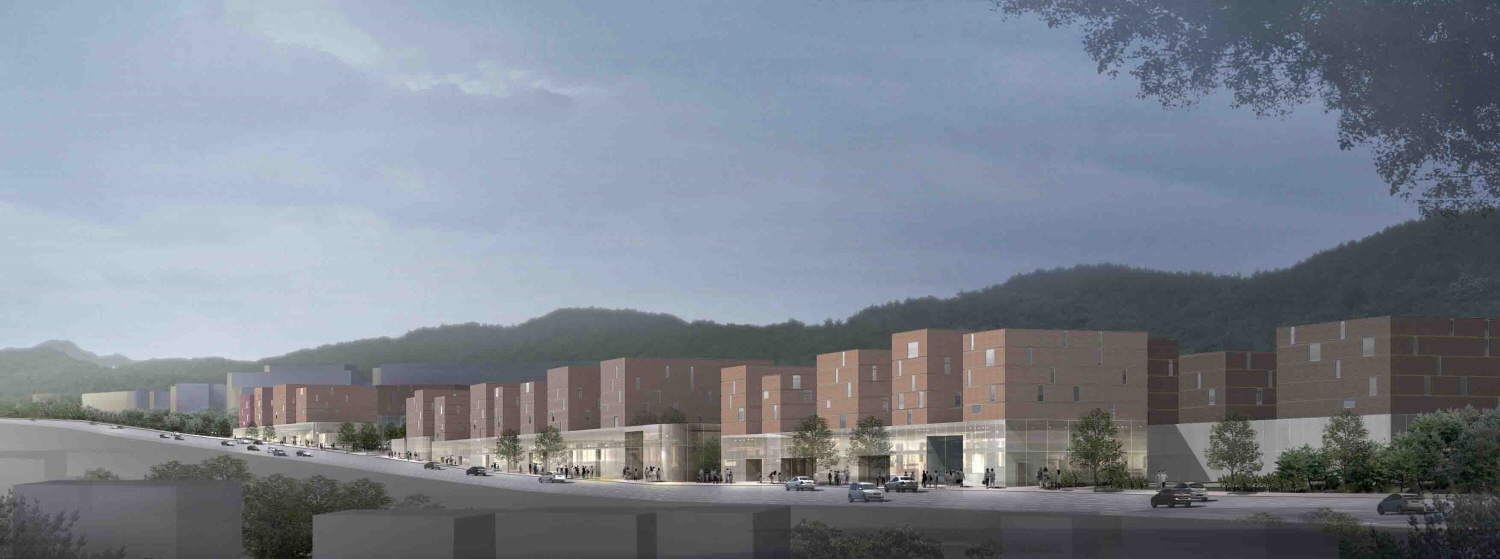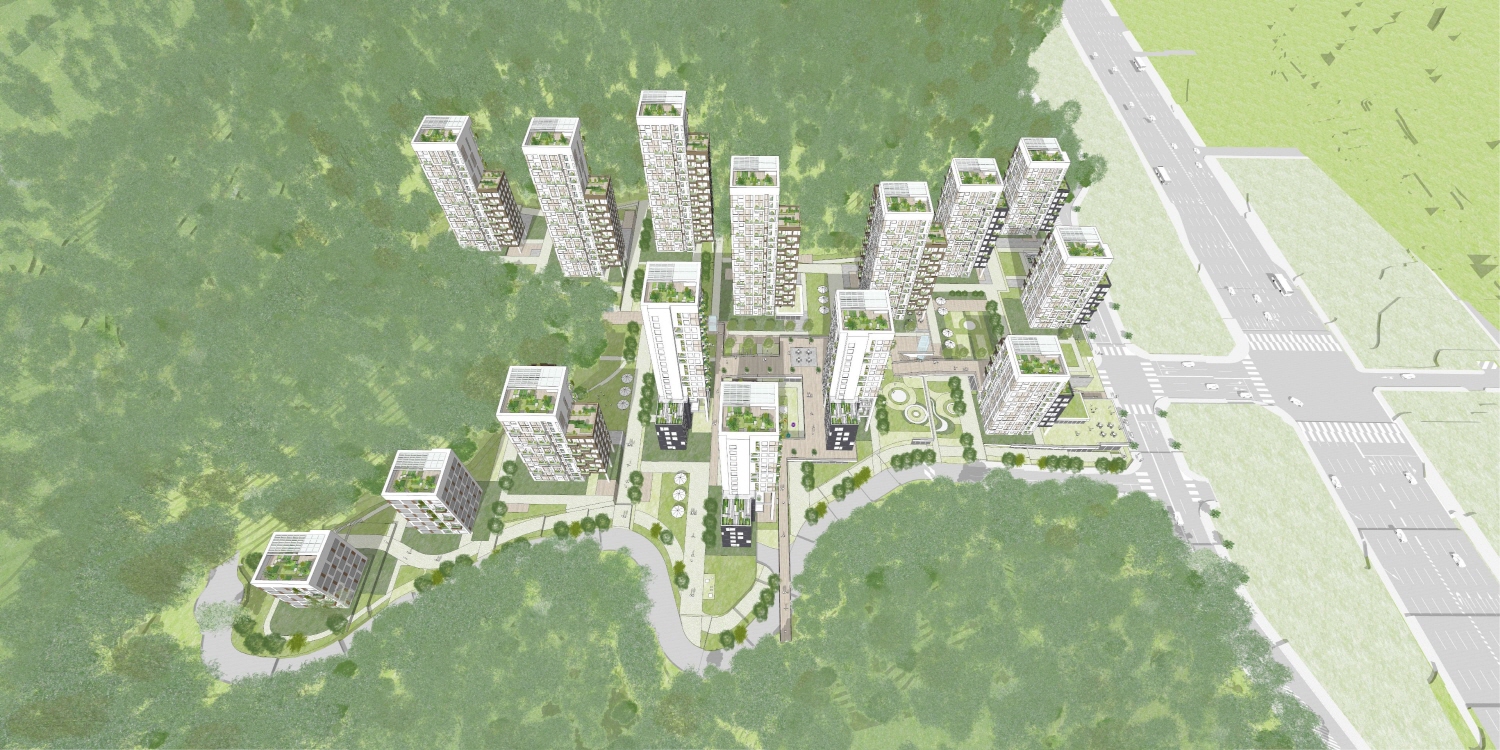SPACE September 2024 (No. 682)

성뒤마을 복합개발 마스터플랜 설계공모 당선안(2017) ©IROJE architects & planners

서초 성뒤마을 공공주택지구(A1) 건축설계공모 당선안(2024) ©SIAPLAN Architects & Planners
On July 22, Seoul Housing & Communities Corporation (SH) announced the winner of the ‘Seocho Public Housing (A1) Competition’: Gardening City by SIAPLAN Architects & Planners + designgroup OZ + THEHILLENC Co., Ltd.. As a result, ‘Beginning of Seongdwi Maeul, the Shared Village: Learning and Enjoying with Art and Culture’, the winning proposal for the previous design competition, shared the same project site with ‘Seongdwi Maeul Complex Development Master Plan Design Competition’ (hereinafter Seongdwi Master Plan Competition) which in 2017 went up in smoke. The proposal was delicately designed by IROJE architects & planners + Hyupdongone + Han-A Urban Research Institute. It is surprisingly parallel to the case, ‘Beksa Village Residential Preservation Project’ (covered in SPACE No. 680).
Seongdwi Maeul, the project site for both competitions, is known as a shanty town on the Umyeonsan Mountain located on the border between Seocho-gu, Seoul-si and Gwachon-si, Gyeonggi-do. Similar to the Beksa Village, the village flourished with the settlement of migrants during the development of Gangnam in the 1960s and 1970s. It is a by-product of urban development. Since 2010, the expensive land price of the Seocho district and its vulnerable living conditions triggered relentless attempts at its redevelopment.
In 2010, Seoul Metropolitan Government (SMG) established a consortium with Korea Land & Housing Corporation to reveal an enthusiastic public development plan called ‘Seocho Global Town’. An apartment block for foreign residents, an international school, a convention center, and a hospital were part of the plan. Unfortunately, the ambitious plan has broken down due to the failure to raise the required funding, 500 billion KRW. Two years later, SH tried to spur on the development plan, however, again, it was withdrawn for nature preservation reasons.
Later in 2016, the redevelopment of Seongdwi Maeul resumed with a new agenda, urban regeneration. Under this new approach, the project went smoothly. In Apr. 2017, SMG announced another public development plan with SH followed by the government published Seongdwi Master Plan Competition in July. After two months, Seoul Urban and Architecture Commission (UAC) approved Seongdwi Maeul as Seocho Seongdwi Maeul Public Housing District. The scope of Seongdwi Master Plan Competition in 2017 was a master plan including apartment building for approx. 1,200 households. With careful consideration of the topology of Umyeonsan Mountain, SH intended to create a low-medium density and low-medium rise environment. To achieve such goals, SH provided the following design regulations; for the Apartment Area, it should be an average of 7 floors or less and its floor area ratio (FAR) should be around 160%. For the business facility area, the height should be 7 floors or less and FAR shall be 250%. The organiser also asked participants to suggest various programmes; cultural clusters intertwining with neighbouring cultural spaces such as Seoul Arts Center or any local community engagement. In Jan. 2019, it was decided the design guideline should be applied; a FAR of 160% and a maximum of 7 floors or less, from the master plan to 813 apartment houses in the approved district plan.
In the Seocho Public Housing (A1) Competition, the design restrictions have been loosened. The purpose of the competition seems different to the previous one. In the name of garden city, open network, and century housing system, the regulations intended to harmonise with surroundings are ignored. The new competition allows 200% for FAR and 15 floors for the maximum height. This reflects the approval of the ‘Proposal for District Planning for Seocho Seongdwi Maeul Public Housing Development District’ from the Integrated Committee for Deliberation on Public Housing Projects in Mar. 2024. SMG decided to hold another design competition, instead of reusing their existing masterplan. For us, it is crucial to notice the hidden purpose of it. The city strived to apply loosened regulations to this generous site. Consequently, the revised plan brought 1,600 households in total. Despite this astonishing achievement, one must not lose sight of the massive social cost of the choice from SMG. The decision left another un-built blueprint in our history.





